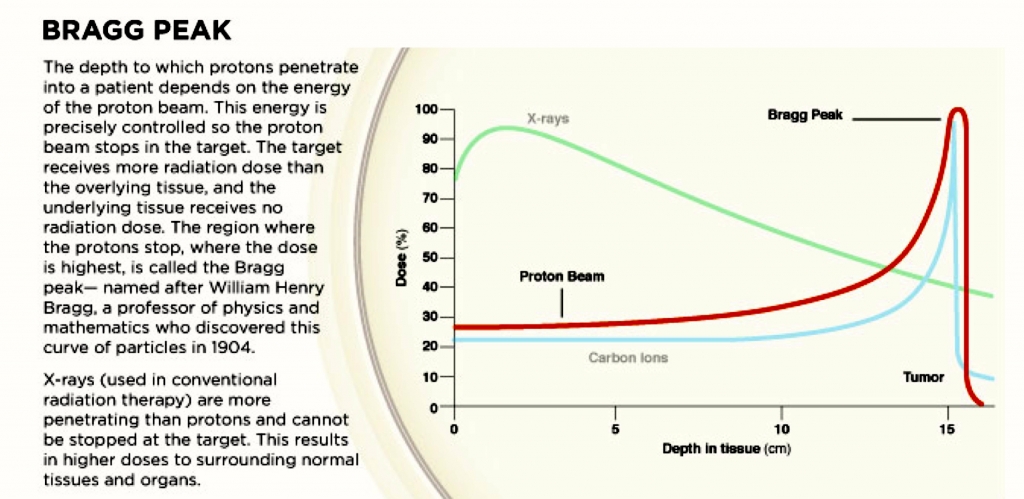Proton Therapy Defined
Proton therapy is a type of external beam radiotherapy using ionizing radiation. During treatment, a particle accelerator is used to target the tumor with a beam of protons. These charged particles damage the DNA of cells, ultimately causing their death or interfering with their ability to proliferate. Cancerous cells are particularly vulnerable to attacks on DNA because of their high rate of division and their reduced abilities to repair DNA damage.
Due to their relatively large mass, protons have little lateral side scatter in the tissue; the beam does not broaden much, stays focused on the tumor shape and delivers only low-dose side-effects to surrounding tissue. All protons of a given energy have a certain range; very few protons penetrate beyond that distance.
To treat tumors at greater depths, the proton accelerator must produce a beam with higher energy, typically given in eV or electron volts. Tumors closer to the surface of the body are treated using protons with lower energy. The accelerators used for proton therapy typically produce protons with energies in the range of 70 to 250 MeV (mega electron Volts: million electron Volts). By adjusting the energy of the protons during application of treatment, the cell damage due to the proton beam is maximized within the tumor itself. Tissues closer to the surface of the body than the tumor receive reduced radiation, and therefore reduced damage. Tissues deeper within the body receive very few protons so that the dosage becomes immeasurably small.
In most treatments, protons of different energies with Bragg peaks at different depths are applied to treat the entire tumor. These Bragg peaks are shown as thin blue lines in the figure to the right. The total radiation dosage of the protons is called the Spread-Out Bragg Peak (SOBP), shown as a heavy dashed blue line in figure to the right. It is important to understand that, while tissues behind or deeper than the tumor receive no radiation from proton therapy, the tissue in front of or shallower than the tumor receive radiation dosage based on the SOBP.
One may also learn more about Proton Therapy including the development and progress of Proton Centers at The National Association for Proton Therapy at their website at: http://www.proton-therapy.org

